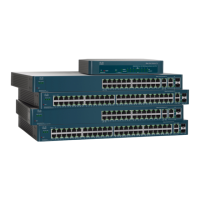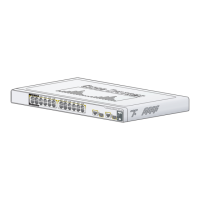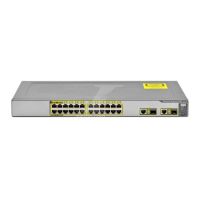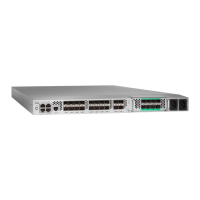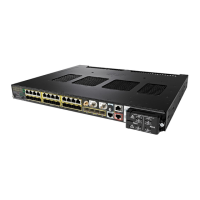Spanning Tree
VLANs to a MSTP Instance
305 Cisco 500 Series Managed Switch Administration Guide
15
Switches intended to be in the same MST region are never separated by switches
from another MST region. If they are separated, the region becomes two separate
regions.
This mapping can be done in the VLAN to MSTP Instance page.
Use this page if the system operates in MSTP mode.
To d e f i n e M S T P :
STEP 1 Click Spanning Tree > STP Status and Global Settings. Enable MSTP.
STEP 2 Click Spanning Tree > MSTP Properties.
STEP 3 Enter the parameters.
• Region Name—Define an MSTP region name.
• Revision—Define an unsigned 16-bit number that identifies the revision of
the current MST configuration. The field range is from 0 to 65535.
• Max Hops—Set the total number of hops that occur in a specific region
before the BPDU is discarded. Once the BPDU is discarded, the port
information is aged out. The field range is from 1 to 40.
• IST Master—Displays the regions master.
STEP 4 Click Apply. The MSTP properties are defined, and the Running Configuration file
is updated.
VLANs to a MSTP Instance
The VLAN to MSTP Instance page enables you to map each VLAN to a Multiple
Spanning Tree Instance (MSTI). For devices to be in the same region, they must
have the same mapping of VLANs to MSTIs.
NOTE The same MSTI can be mapped to more than one VLAN, but each VLAN can only
have one MST Instance attached to it.
Configuration on this page (and all of the MSTP pages) applies if the system STP
mode is MSTP.
Up to 16 MST instances can be defined on the 500 Series switches in addition to
instance zero.
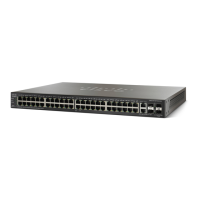
